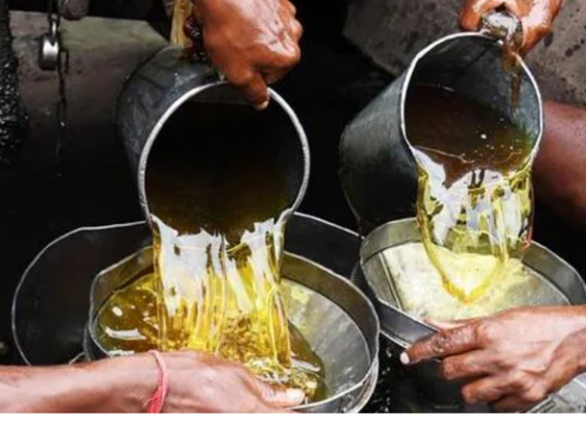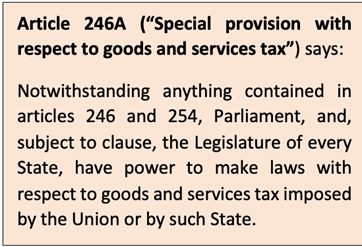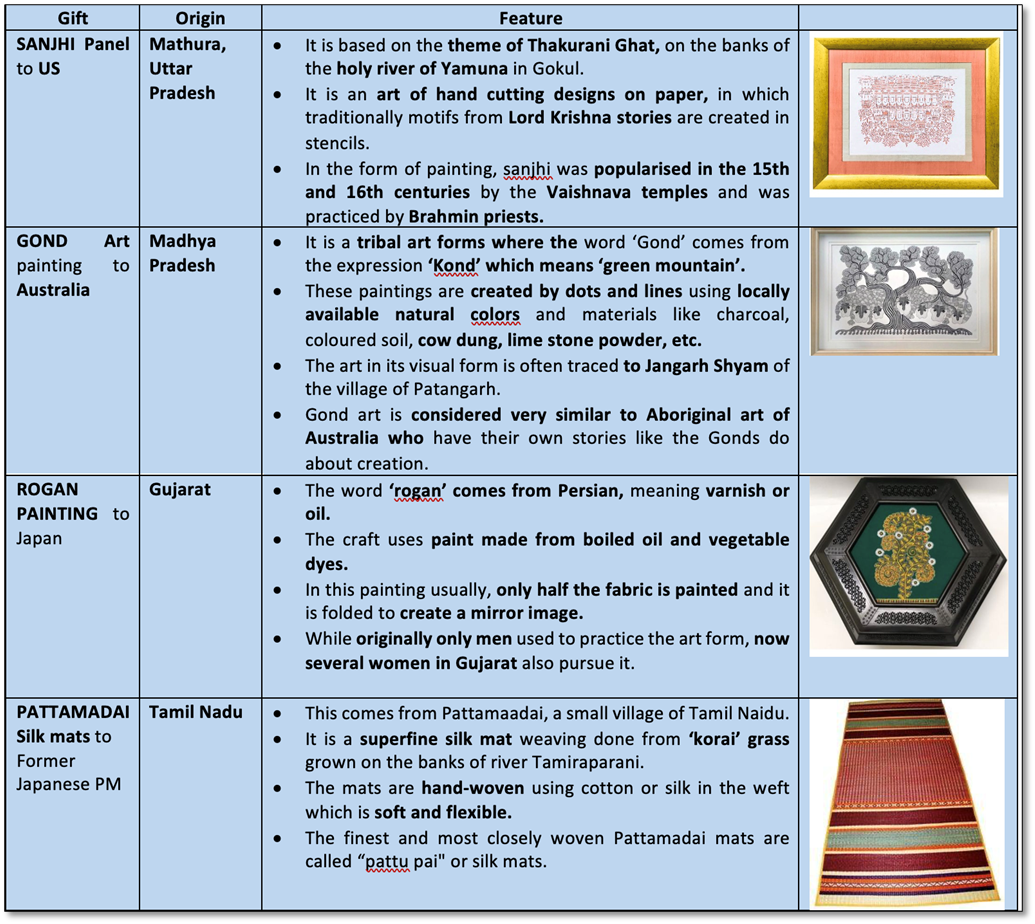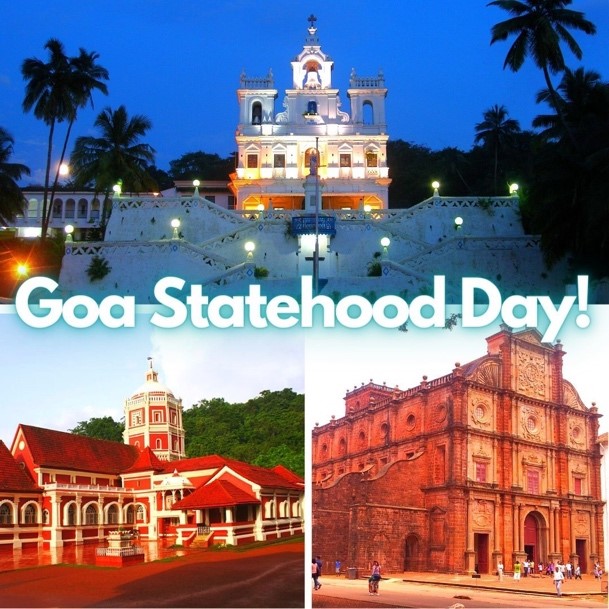Friday, 3rd June 2022
Puri Heritage Corridor Project
In News
The Supreme Court has refused to stay the ongoing construction at Puri’s Jagannath Mandir and dismissed two petitions challenging the work.
What is the Puri Heritage Corridor Project?
- About: It is a ₹3,200-crore redevelopment project of the Odisha government in Puri to create an international heritage site, including the 800-year-old Jagannath temple.
- Objective: It aims to secure the temple, the safety of devotees, and the creation of a religious atmosphere for devotees.
- Proposals: Under the scheme, 22 development projects are planned, including the temple corridor, the revival of the Musa River, and the Puri Lake Project.
- Importance: The Jagannath temple is a 12th-century temple designated as a monument of national importance by the Archaeological Survey and is a centrally protected monument.
What are the major issues against the project?
- About: Conceived in 2016, the ambitious Puri Heritage Corridor Project has become the centre of a political slugfest between different parties and the state government.
- Objection of ASI: Being the custodian of temple area, it has flagged concern that there was a possibility that the archaeological remains at the heritage site were being destroyed due to the excavation work for the corridor.
- Area limitation: An impact assessment is required to be done by the NMA before development around a monument if the built-up area of the monument is beyond 5,000 square metres. The built-up area of the Jagannath temple stands at 43,301.36 sq metres.
- Ambiguity: The term “construction” as defined in the AMSAR Act does not include the construction of public toilets, urinals, and “similar conveniences”. Besides, it also does not include works for the supply of water, electricity or “provision of similar facilities for publicity”.
- Submission by State: The Odisha government refuted the ASI report in court, saying that it had acquired a NOC from the NMA in 2021 as per the Ancient Monuments and Archaeological Sites and Remains (AMSAR) Act.
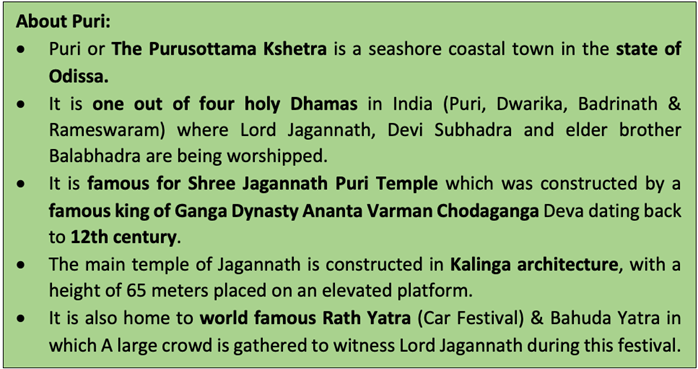
Sources:
Use and File
In News
Regulator IRDAI, recently, permitted insurers to introduce health and almost all general insurance products without its prior approval, a move aimed at ensuring a ‘a fully insured India’.
About the News
- The Insurance Regulatory and Development Authority of India (IRDAI) extended the ‘Use and File’ procedure for all health insurance products and almost all general insurance products.
- General insurers are now permitted to file all products under fire, marine, motor, and engineering lines of business under the 'Use and File' procedure for both retail and commercial categories.
What is ‘Use and File’?
- Under ‘Use and File’, insurers are permitted to market products without the regulator’s prior approval, thus avoiding a long wait.
- Under the existing ‘File and Use’ system, an insurer wishing to introduce a new product has to first file an application with the IRDAI and use the product for sale in the market only after getting all regulatory approvals.
What if the regulator raises concerns over such a product later?
- If a customer has already taken an insurance policy launched under ‘Use and File’, and the IRDAI later raises concerns about it, then it can lead to some rethinking.
- The customer will continue to get the benefits of the policy for the first year, and if the insurance company makes amendments in line with regulator’s apprehensions, the customer will still get these benefits.
- However, if the policy is withdrawn because of IRDAI’s intervention, the product will no longer be available for renewal in the second year.
- In such a case, the insurance company may provide the policyholder with similar options from its existing policies, and the customer may agree to taking one.
Benefits of the move
- The move will help in improving the ease of doing business in the insurance sector by moving from the current regime requiring prior approval for launching the products to a regime where products could be launched without any prior approval.
- The insurance industry is expected to use this opportunity for the introduction of customised and innovative products, and expansion of the choices available to the policyholders to address the dynamic needs of the market in a timely manner.
- This will further help in enhancing the insurance penetration in India.
- Further it is also aimed at facilitating the industry to respond faster to emerging market needs, in terms of designing and pricing general insurance products and promoting efficiency in the conduct of the general insurance business.
Sources:
- IRDAI permits health, general insurers to introduce products without its prior approval
- IRDAI eases approval norms for health, general insurance products
- Irdai eases product approval norms
- IRDAI allows health, general insurance products to be launched without prior nod
- Insurance Regulatory & Development Authority
- Explained: How ‘Use and File’ system will bring new health insurance products faster:
PM CARES Scheme for Children
In News
The Prime Minister had recently released benefits like scholarships and health insurance under the PM CARES for Children scheme to support children who lost their parents due to coronavirus during the pandemic.
Understanding PM CARES Scheme for Children
- What is it? PM CARES for Children was launched in May 2021 to ensure rehabilitation and education of children who lost caregivers to Covid between March 2020, when Covid-19 was declared as a pandemic by the WHO, and February 2022.
- Whom does it apply to? The scheme applies to children who have lost both parents or a surviving parent or legal guardians/adoptive parents, to ensure their rehabilitation and education.
- Nodal Agency & Funding: The Ministry for Women and Child Development (MoWCD) is the nodal agency and the scheme is funded by PM Cares.
- Need for such a scheme: A recent study in The Lancet had estimated the number of such children in India to be around 19 lakh which was opposed by the Ministry for Women and Child Development (MoWCD) as “sophisticated trickery” and said the number was close to 1.53 lakh.
Major Benefits of the scheme
- The scheme will provide a monthly stipend to each child from the age of 18 years, and a lump sum amount of Rs 10 lakh on attaining the age of 23.
- The benefits also include an annual scholarship of Rs 20,000 for school students and monthly financial support of Rs 4,000 for daily needs.
- Health coverage will be given through the Ayushman Card, and counselling through the Samvad helpline for psychological and emotional help.
- Guidelines under different age brackets:
- Till six years of age, children will receive support from Anganwadi services for supplementary nutrition, pre-school education.
- For children below 10 years of age, admission shall be provided in any nearest school – government/government-aided school/Kendriya Vidyalayas (KVs)/ private schools – as a day scholar.
- Other Provisions:
- In private schools, tuition fees will be exempted.
- The scheme will also utilise existing schemes and programmes. For instance, two sets of free uniform and textbooks shall be provided under the Samagra Shiksha Abhiyan.
- Additionally, the scheme will help place the orphaned children either in the care of relatives and family, or with Child Care Institutions (CCIs), or in a Sainik School, Navodaya Vidyalaya, or other residential schools.
- CCIs are centres for children in need of care or in conflict with the law, and are mentioned under the Juvenile Justice Act of 2015.
- Bal Swaraj Portal: In the backdrop of courts’ emphasis to attend to the basic needs of such children, National Commission for Protection of Child Rights (NCPCR), as a monitoring authority under the Juvenile Justice Act, had set up the “Bal Swaraj” portal where data of the orphaned children has been uploaded since 2020.
- Current Status: So far, 9,042 applications have been received under PM CARES for Children, of which 4,345 have been approved. Most of the approved applications are from Maharashtra, Uttar Pradesh and Madhya Pradesh while most applications have been received from Rajasthan, Maharashtra and Uttar Pradesh.
Source:
- Explained: What is the PM CARES scheme for children who lost parents to Covid?
- Benefits under PM CARES for Children Scheme to be released by PM Modi today at 10:30 AM
- PM-CARES for Children’ scheme
Image source:
BigTech in Financial Services
In News
Reserve Bank of India (RBI) has again warned that the entry of BigTech into the financial services space could have systemic risks.
About the News
- The entry of BigTech into the financial sector is a global phenomenon, engaging the attention of central banks around the world.
- RBI is concerned regarding a deal between Google Pay and Equitas Small Finance Bank, announced in September 2021.
- The deal was meant to allow customers use Google Pay to open fixed deposits with Equitas. This raises the question of involvement of a large tech company in garnering customer deposits, although the payment app of Google is understood to be meant only for distribution of the product.
- RBI believes regulations are needed to mitigate risks. It believes the size of large tech firms in finance poses a systemic and concentration risk to the economy; they also have an unfair competitive advantage over regulated entities.
- RBI plans to introduce policy measures for such companies and for digital banking.
- In June 2018, the RBI set up a fintech unit under the department of regulation as a central point of contact for activities related to fintech. In January, this was hived off as a separate department.
About Bigtechs in Financial Service?
- In India, fintech has been entering businesses that are beyond the scope of just one regulator. The most popular ones are in the payments space through the domestic unified payments system.
- Others deal in equity markets, mutual funds, and insurance.
- In the initial days fintechs were seen as a competition to the banking sector, but they later evolved as a partner to several traditional banks and non-bank lenders.
Source:
Tiananmen Square
On June 3, 1989, the Chinese government called in the military to put down a pro-democracy demonstration staged by more than 100,000 people in Tiananmen Square in Beijing, resulting in hundreds of deaths. On June 3 and 4, the military opened fire and killed untold numbers of peaceful protesters and bystanders.

The Tiananmen incident was precipitated by the peaceful gatherings of students, workers, and others in Beijing’s Tiananmen Square and other Chinese cities in April 1989, calling for freedom of expression, accountability, and an end to corruption. The Chinese government responded to the intensifying protests in late May 1989 by declaring martial law.
Other major event on this day: https://edukemy.com/current-affairs/gazette/2021-06-03/this-day-in-history-mountbatten-plan
Sources:
Garb Grah/ sanctum sanctorum
- Context: The Chief Minister of Uttar Pradesh has recently laid the foundation stone of the sanctum sanctorum, for construction of Ram temple in Ayodhya.
- A garbhagriha or sannidhanam is the sanctum sanctorum-the innermost sanctuary of a temple, where the murti of the primary deity of the temple resides.

- Literally the word means "womb chamber", from the Sanskrit words garbha for womb and griha for house.
- Although the term is often associated with Hindu temples, it is also found in Jain and Buddhist temples.
- In a temple architecture, garbhagriha is preceded by one or more adjoining pillared mandapas (porches or halls), which are connected to the sanctum by an open or closed vestibule (antarala).
- The entrance doorway of the sanctum is usually richly decorated with figures of river goddesses and bands of floral, figural, and geometric ornamentation.
- An ambulatory is sometimes provided around the sanctum.
Source:
Image source:
My Pad My Right programme
- Context: NABARD has recently launched “My Pad My Right” programme in Leh.
- The project is an initiative of NABARD and its NAB Foundation, to provide better livelihood and menstrual hygiene to women in rural areas through grants, wage support and capital equipment.
- The initiative provides one sanitary pad making machine, raw materials for two months, wages for 50 days, packaging material with accessories and a five-day training in three phases.

- Through the scheme, women belonging to rural areas will be able to get employment opportunities along with knowledge of menstrual hygiene, thereby improving their livelihood.
- Also the women of rural areas will be able to stay disease free by getting hygienic.
Source:
- Union Minister Nirmala Sitharaman launches My Pad My Right project in Tripura
- Tripura My Pad My Right Project 2022: Benefits & All Details
Image source:
Valley of Flowers
- Context: The world's famous Valley of Flowers has been opened to tourists recently.
- The Valley of Flowers, located in the Chamoli district of Uttarakhand, is at an altitude of 3000m, and stretches over an expanse of 87.50 sq. km.
- It was declared a National Park in 1982 and a UNESCO World Heritage Site in 2005.
- The Valley of Flowers is nestled in the Pushpawati river valley which is in the upper expanses of Bhyundar Ganga river, near Joshimath in Garhwal region.
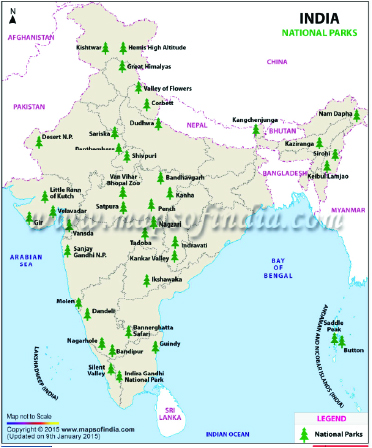
- It is home to over 600 flowering species, including some exotic varieties like Brahmkamal, which is also the state flower of Uttarakhand.
- The park lies completely in the temperate alpine zone and is encompassed in the Nanda Devi Biosphere Reserve.
- The area lies on the Zanskar range of the Himalayas, with the highest point in the national park being Gauri parbat.
- The valley was accidentally discovered by Frank S Smythe, a British mountaineer and Botanist, while returning from an expedition.
Source:
- UNESCO World Heritage Site ‘Valley of Flowers’ opens on June 1
- Valley of Flowers opens for tourists with more vegetation
- Valley of Flowers National Park
Image source:
Artillery rockets
- Context: The USA has recently announced that it would send its most advanced artillery rocket launcher and munitions to the Ukrainian military.
- An artillery rocket is a weapon that is typically propelled by a solid-fuel motor and can carry a variety of warheads.
- The US had launched MLRS (Multiple Launch Rocket System) in 1970 that could carry two “pods” of munitions.

- Later, the USA introduced a more easily transportable version called HIMARS, for High Mobility Artillery Rocket System.
- HIMARS are a high-tech, lightweight rocket launcher that is wheel mounted, giving it more agility and manoeuvrability on the battlefield.
- Each unit can carry six GPS guided rockets, which can be reloaded in about a minute with only a small crew, and has a range of about 50 miles.
- The HIMARS will give Ukraine’s forces the ability to attack further behind Russian lines and launch attacks from a more protected distance.
- The major advantage of the MLRS and HIMARS launchers is that, they can be fully reloaded within minutes.
Source:
- Explained: What are ‘artillery rockets,’ and why is the US sending them to Ukraine?
- What is HIMARS? The advanced rocket system US is sending Ukraine
Image source:
Why today’s debates over Aurangzeb, Shivaji, Rana Pratap or Prithviraj Chauhan are not about good or bad history, but tussles over memory: Indian Express
Essence: Author is of the view that the real purpose of History is to know facts and not to make narratives for the purpose of moral lessons or fixing blames or even worse letting once imagination create history.
Article points out that trying to simplify actions of a historical personality for fueling identity politics can be not only dangerous but also self-defeating since personalities of different social identities like Aurangzeb and Man Singh often collaborated to shape the course of history. Another problematic feature of present-day history is the obsession to ascertain motives behind the historical events without the presence of any definitive tool to enable us to do so.
We must learn to differentiate between “memory” which looks for facts that suits the veneration of the main object of recollection and “History” which is more detached analysis of facts and always aware of limitations of its methods.
Why should you read this article?
- To make sense of different narratives about the past going on in Indian society.
- To be able to take a rational stand in an interview on a very emotive issue of identity and past.
Source:
GST Council must uphold fiscal federalism: Indian Express
Essence: Recently the Supreme court made a landmark ruling on federalism in general, and fiscal federalism in particular. The ruling was related to maintaining federalism in GST council. This article discusses the importance of the ruling.
The court held that the state governments and Parliament, while exercising their rule-making powers under the provisions of the State GST Acts, CGST & IGST Acts, are bound by the recommendations of the GST Council. But even this did not mean that all recommendations of the GST Council are binding on state legislatures or Parliament to enact primary pieces of legislation on GST. In effect, states can amend their GST laws if they so choose.
The Supreme Court’s decision ought to be a wake-up call and deserves careful consideration. The GST Council is founded on the bedrock of collaborative federalism. If the GST Council meets periodically as mandated and there is active participation of the states in making recommendations, no state will oppose a recommendation that has been carefully deliberated and is in the national interest.
Why Should you read this article?
- To know about the recent ruling of the Supreme Court on GST Council.
- To understand the need for fiscal federalism.
Source:
Transgender Bodybuilder Champion
Background
Shunned for coming out as a transman, Praveen Nath fought his way to becoming Kerala's first transgender bodybuilder— and went on to win the title of Mr. Kerala.
About Praveen’s Journey
- Praveen Nath is Kerala's first transgender bodybuilder and went on to win Mr Kerala in 2021.
- For over 15 years, Praveen Nath of Palakkad, Kerala, had to conceal his identify as a transman. Even so, when he exposed his identity, he was expelled from college and forced to leave his home.
- After fleeing his home, he sought refuge at Sahayathrika, a Kerala-based organisation dedicated to the welfare of transgender people. Praveen worked hard with their encouragement and eventually became a bodybuilding champion.
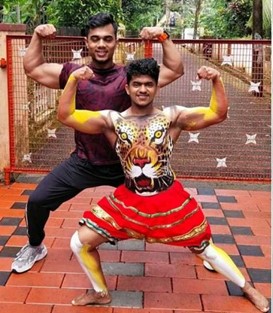
- His journey to the title has been very challenging, especially as the bodybuilding association was reluctant initially to carve a new category for transgender persons.
- However, his trainer, Vinu Mohan, went beyond of his way to encourage Praveen and Mr Kerala organisations to add a third category for trans individuals.
Quote: I don't think we should be discriminating against anyone. Transgender people are people and deserve the best we can do for them.-Orrin Hatch
Source:
Share the article
Get Latest Updates on Offers, Event dates, and free Mentorship sessions.

Get in touch with our Expert Academic Counsellors 👋
FAQs
UPSC Daily Current Affairs focuses on learning current events on a daily basis. An aspirant needs to study regular and updated information about current events, news, and relevant topics that are important for UPSC aspirants. It covers national and international affairs, government policies, socio-economic issues, science and technology advancements, and more.
UPSC Daily Current Affairs provides aspirants with a concise and comprehensive overview of the latest happenings and developments across various fields. It helps aspirants stay updated with current affairs and provides them with valuable insights and analysis, which are essential for answering questions in the UPSC examinations. It enhances their knowledge, analytical skills, and ability to connect current affairs with the UPSC syllabus.
UPSC Daily Current Affairs covers a wide range of topics, including politics, economics, science and technology, environment, social issues, governance, international relations, and more. It offers news summaries, in-depth analyses, editorials, opinion pieces, and relevant study materials. It also provides practice questions and quizzes to help aspirants test their understanding of current affairs.
Edukemy's UPSC Daily Current Affairs can be accessed through:
- UPSC Daily Current Affairs can be accessed through Current Affairs tab at the top of the Main Page of Edukemy.
- Edukemy Mobile app: The Daily Current Affairs can also be access through Edukemy Mobile App.
- Social media: Follow Edukemy’s official social media accounts or pages that provide UPSC Daily Current Affairs updates, including Facebook, Twitter, or Telegram channels.

